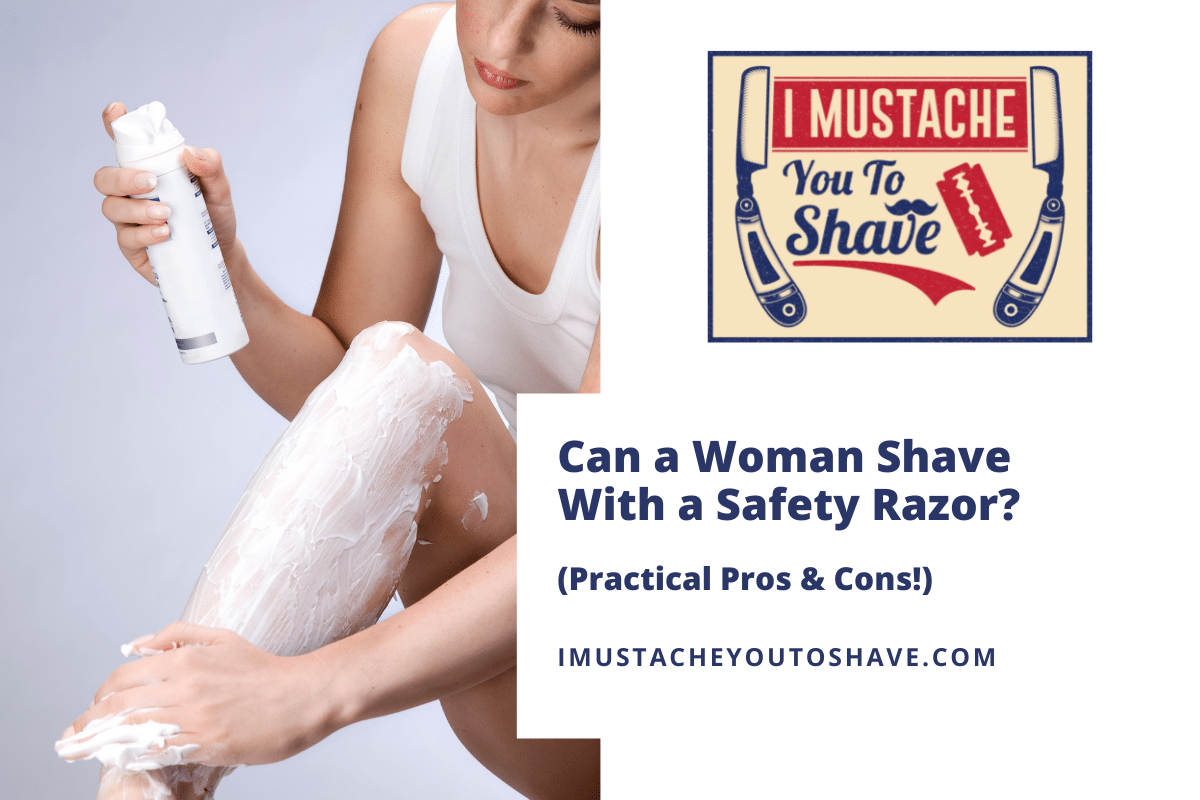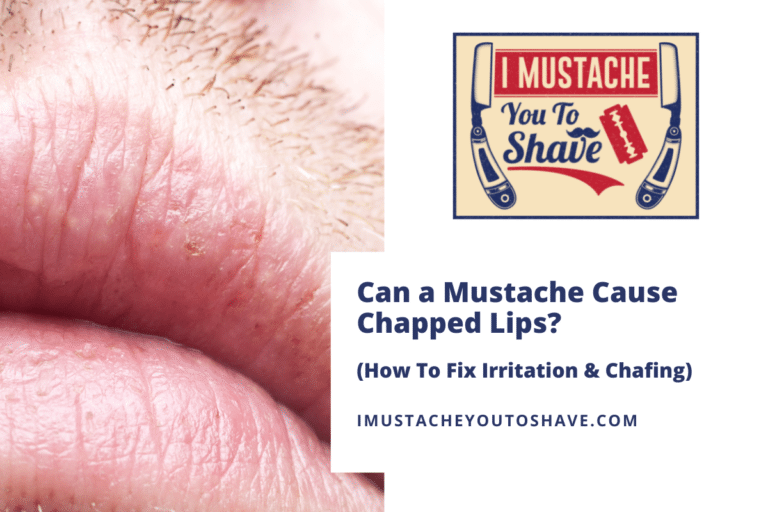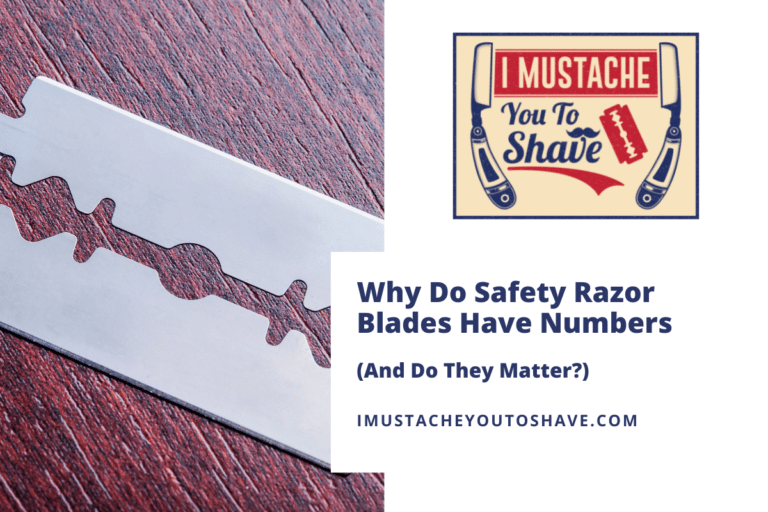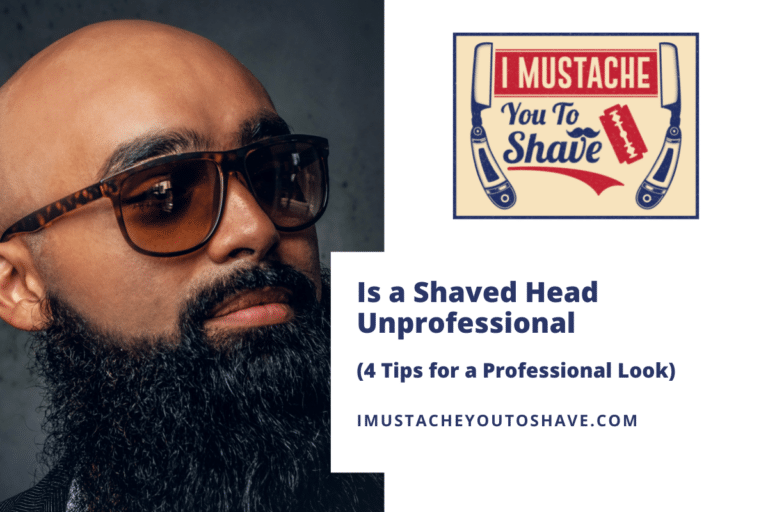Can a Woman Shave With a Safety Razor? (Practical Pros & Cons!)
With men becoming more interested in shaving with a safety razor, you may wonder if women can use one as well – after all, men’s and women’s typical shaving areas are very different.
Women can use a safety razor to achieve a smoother, closer shave than with a disposable razor with less irritation. They are also less expensive to maintain and more environmentally friendly. Some women may be reluctant to make the switch because the stationary head design requires a substantially different shaving method than they are used to.
If you are thinking about making the switch to a safety razor, read on for practical tips and a discussion about the pros and cons!
Should women try shaving with a safety razor?
In recent years, men have started to show renewed interest in shaving with a traditional safety razor. Can a woman use a safety razor as well?
Safety razors used in women’s hair removal is not a new concept. Gilette marketed the first safety razor for women, the Milady Decollette, in 1915.
As with almost anything, there are pros and cons to choosing a safety razor over a disposable razor or a plastic cartridge razor.
Advantages of switching to a safety razor shave for a woman include:
- Environmentally-friendly
- Less expensive over time
- Less skin irritation
- Closer, smoother shave
There are many reasons why women should try shaving with a safety razor. A safety razor is economical, environmentally conscious, and effective.
A safety razor is much more economical than a disposable razor in the long run. A safety razor can come in price points to fit any budget. You can even use a safety razor passed down from a family member – a freebie! Then, you just purchase the blades which can be pennies on the dollar, especially if bought in bulk.
A safety razor is also better for our environment. Think of all of the plastic parts involved in disposable razors and their packaging. A safety razor is used over and over again for years and years. The landfills will thank you for it.
Shaving with a safety razor gives you a super close shave without all of the lift and pull action of disposable cartridges. This single-blade shave results in smooth skin without the irritation caused by multiple blades.
However, there are disadvantages to shaving a woman’s body with a safety razor, especially since most are designed with a man’s face in mind.
Cons of using a safety razor as a woman:
- Technique learning curve
- Takes more time to shave properly
- Time finding the perfect razor/blades for you
- Blade disposal
You may wonder if shaving with a safety razor is dangerous. There is a learning curve involved so a few nicks and cuts are possible. However, with practice and the right blade, you should experience a close, clean shave that will last longer than a disposable razor shave.
Shaving with a safety razor also requires a bit more prep than you may be accustomed to, especially if you are currently using a disposable razor with a lubricating strip.
You also need to keep in mind that safety razors use razor blades that will need to be disposed of carefully to avoid creating a safety hazard in the garbage.
Is shaving with a safety razor different?
Shaving with a safety razor may look daunting, but with practice, you can achieve a better shave than you’ve ever had with a disposable.
Shaving with a safety razor is different from disposable razor shaving. The main differences are the number of blades, pivot, and angle.
A safety razor uses one blade to cut the hair. In contrast, a disposable razor can include up to 5 blades. The single blade glides over the hair whereas a disposable razor lifts the hairs before it cuts them. This lift-cut action can cause razor burn and irritation.
If you’ve used a disposable razor, you’ve seen how the head pivots in different directions without much thought. A safety razor head does not pivot. Instead, you must position the razor to move along the contours of your body.
The angle at which you hold a disposable razor against your skin doesn’t matter very much. However, the angle is very important when shaving with a safety razor. Starting with a 30-degree angle is recommended.
Using a safety razor for the first time
The average woman shaves over 7,000 times in her lifetime. That’s a lot of disposable razors filling up the landfills. Why not make the switch to a safety razor today?
Using a safety razor for the first time can be daunting, but here are some practical tips to get you started:
- Choose a safety razor
- Choose the blade
- Prepare your skin
Choose a safety razor
Choosing the perfect safety razor can take a little time.
They come in so many different styles, colors, and price points. Take your time and do some research to find the best option for you. Unlike a disposable, you’ll be using this one for years to come.
If you are looking to buy new, safety razors can be found at online retailers like Amazon and specialty grooming shops. Safety razors can also be found in antique or vintage stores. Your grandmother or grandfather may even have one to pass down to you. If contemporary is more your speed, retailers are marketing stylish safety razors specifically for women.
Safety razors are customizable too. Handle lengths can come in short to extra-long. Many are adjustable. Adjustability is key for women. You may prefer a long handle while shaving your legs while a shorter handle may be perfect for your bikini line.
Choose the blade
Once you have your handle, you can start testing out razor blades. Try buying the smallest packs available (usually 5 or 10 blades) before settling on one. Unlike the handle, you will be able to test a variety of these out before making a final decision.
The choice of blade is up to your own preferences. Will you be shaving only your legs? Will you be shaving your delicate bikini area? These answers will help you decide on YOUR perfect blade.
Choosing the perfect blade for your razor is just as important as the safety razor itself. You can choose a single-edge blade or a more economical double-edge blade.
Blades come in a variety of metal choices such as stainless steel, platinum, and chrome. Some blades are thin and flexible. Some are heavy-duty.
Since you will need to freshen your blade regularly, it’s necessary to dispose of them properly to avoid being cut by the sharp edges. You can wrap it in tissue before you throw it away or buy a blade disposal bank.
Prepare your skin
Preparing your skin before your shave is extremely important. Skin prep can prevent unnecessary cuts and give the safety razor a smooth surface to slide over.
Can you use your normal shaving gel or cream? Yes, however, you may want to try some new products like glycerin or Castille soap, a shaving brush, and a bowl to take the experience to a new level.
If you’re shaving in the tub, light some candles too. Make it a pampering event!
How to shave with a safety razor – for women
Now that you are all prepped and ready to go, let’s discuss how to safely shave with a safety razor.
The shaving step is when you will see the major differences between this type of razor and a disposable. The main differences are hand pressure, pivoting, and angle.
Finding the correct hand pressure will take some trial and error. You don’t want to apply as much pressure as you typically do with a disposable. Using a light hand will give you a smooth shave.
As mentioned before, the safety razor head doesn’t pivot. You will need to pick up and position the razor in the direction you want to shave. While we’re on the topic of shaving direction, almost always shave “with the grain.” This means in the direction your hair grows.
The angle at which you hold the razor is important. An angle range of 30-45 degrees should give you the smoothest shave without irritation.
How to use a safety razor on your armpits
The trend of shaving women’s armpits started after an advertisement in Harper’s Bazaar magazine in 1915. This ad showed a woman in a sleeveless dress with hairless armpits. Up until this point, women didn’t show their armpits in public.
Using a safety razor on your armpits takes some practice, but should result in a smooth underarm area.
Prepare your skin by applying a pre-shave product like a conditioner to soften the hair since it tends to be coarser than your leg hair. Next, apply some shaving cream – the more lather the better.
You will need to make 2 or 3 passes with the razor depending on your hair growth. If your skin is sensitive, 2 passes would be best. The first pass should go with the grain. The second pass should go across the grain. If you need a third pass, go against the grain. Be careful on the third pass since going against the grain can be irritating.
After your shave, you can use an alum bar and/or an after-shave treatment to protect your skin.
How to use a safety razor on your legs
Using a safety razor on your legs is very similar to how you shave your underarms. Skin prep, no pressure, and the correct angle are key to the perfect safety razor leg shave.
Tub shaving or shower shaving is fine. Just make sure you are in a well-lit area. Prep your skin with a pre-shave and frothy shaving cream. Using a shave brush and bowl will allow you to work up a perfect lather.
Use no pressure. Let the razor do the work. Take short strokes. Most cuts will occur around your ankle bone or knee cap area. Take very short, diagonal strokes around your ankle. When you get to the knee area, make sure you use a lot of lather. Stretch the knee and make small strokes.
The correct angle for a leg shave is between 30-35 degrees. This angle will let the safety razor cut the hair cleanly while reducing the incidence of nicks and skin irritation.
How to use a safety razor on your bikini area
You can also use a safety razor on your bikini area. Yes, I’m serious – you can! In fact, the sleek blade of a safety razor can reduce those annoying razor bumps and ingrown hairs that are common with disposables.
When shaving this sensitive area, slow and steady wins the race. Do not get in a hurry. Lather up really well. Remember, no pressure. Shave with the growth of your hair. Maintain that 30-degree angle.
Following these tips will result in a smooth, precise shave down there.







